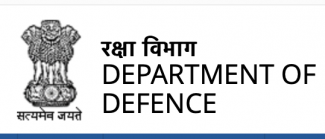The World of Committees and Task Forces
In India, attempts at reforming complicated sectors like national defence invariably start with the constitution of committees/task forces. Afterwards, the leadership battles conflicting positions on recommendations, leading to either shelving such reports or, at best, partial implementation that is more ad hoc than preferred solutions. A survey of committees constituted between 2002 and 2015 justifies this assessment.
"Accommodating corporate aspirations would be the biggest task before V K Atre Task Force on Strategic Partners"
Consider three examples: a) The Group of Ministers Report (2001) on the management of national security had recommended, among others, the creation of a Chief of Defence Staff (CDS) for single-point military advice to the Defence Minister. The government created a half-way Chief of Integrated Defence Staff (CIDS) position responsible for joint planning (more budgetary, less institutional level joint-ness). Both inter-service rivalries and civil-military differences were major factors in such a situation. b) Vijay Kelkar Committee (2004) on the revitalization of defence industries had recommended ‘direct defence offsets’, which was incorporated as a mandatory clause in the Defence Procurement Procedure (DPP-2005 and revised subsequently). Non-clarity and ad-hoc implementation mechanisms on defence offsets over the years have thus far produced dismal results. c) Prabir Sengupta Committee (2005) on the selection of Raksha Udyog Ratnas (RUR) from the private sector to act as a locomotive for a resurgent Indian military-industrial complex was shelved the day its contents were deliberated. This time, interestingly, neither the armed forces nor the mandarins were present. Still, it was the Indian private sector that ensured the Sengupta Committee’s comatose status, as most of the industry stakeholders did not agree with these recommendations.
The bulk of such efforts were made between 2001 and 2005, a period when the Indian private sector was brimming with enthusiasm with the hope of grabbing lucrative defence orders worth billions of dollars. Defence production and procurement reforms continued for the next decade, primarily through periodic revisions of DPP and occasional announcements of new policies (like the Defence Production Policy – DPrP – in 2011). A few committees – V K Mishra on defence finance, Ravindra Gupta on defence industry, and Vivek Rae on defence offsets, to name a few – surfaced in the past decade, whose recommendations mainly were kept under the carpet.
The net result reminds us of the French revolutionaries’ slogan—‘We do not want higher or lower or the same bread price’. Otherwise stated, interest group politics in the armed forces, civil bureaucracy, scientific bureaucracy, and state-owned and private industries can make or mar visions and processes of self-reliance in defence.
Modi government started with a promising note to scrub the shibboleths but appears to be stuck halfway. MoD’s first Committee under Dhirendra Singh to recommend changes in DPP-2015 and embed ‘Make in India’ in the defence sector has already led to the constitution of a Task Force under former top defence scientist V K Atre to lay down criteria and methodology for the selection of Strategic Partners (SP) from the private sector to be engaged in high-tech, complex and next-generation defence systems.
Four reasons are cited here for further deliberations on the subject. First, Dhirendra Singh’s SP model does not appear to differ much from the RURs proposed by Prabir Sengupta. If experience is of any indication, the selection criteria to be laid out by Atre could face the same fate as Sengupta’s unless the proposed conditions are acceptable to major Indian companies. This is where Atre has to ensure a smooth selection process for the private sector. Second, some of the criteria laid down by the Singh committee, like no corporate debt restructuring or SP in one domain expertise (like aerospace or shipbuilding), have already been struck down by prospective companies. Singh’s assumption of domain-specific criterion may theoretically lead to the creation of ‘defence dependent’ companies like an Indian version of Lockheed or General Dynamics, while large Indian conglomerates should ideally be encouraged to be a GE or Airbus with domain-specific expertise in the military but diversified enough to weather or mitigate business uncertainties.
Third, while the SP model is not a bad idea, it should go beyond to include a second line of future SPs from the existing pool of medium-sized companies. This would ensure a larger pool of specialized industrial capability in areas beyond specified projects like aerospace, naval, armoured vehicles, etc. Fourth, proposed guidelines must ensure seamless business transactions between identified SPs, their state-owned counterparts, and foreign OEMs. Similarly, structured options for their relationships with components and sub-suppliers from the MSME pool must be worked out.
The Atre task force’s relative success will undeniably boost the national sentiment on self-reliance. The question is: Will it deliver? Only time will tell.
